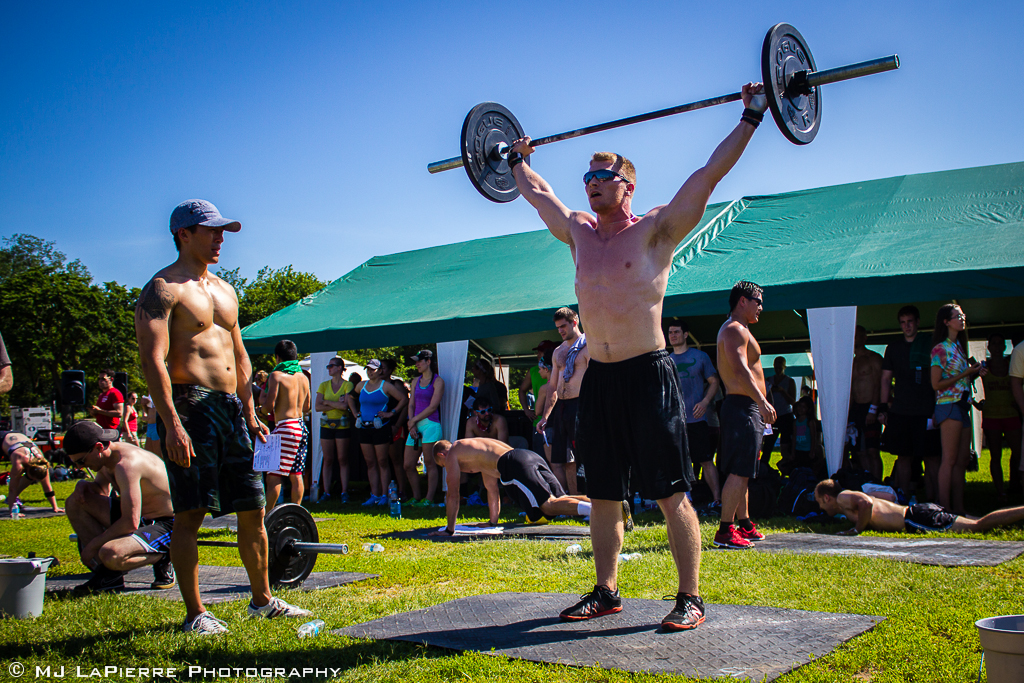
So, I am sure the title of this post probably confuses people. How do you get better at running? You RUN. How do you get better at pull ups, you do pull ups, right? Well, yes and no.
Before I get into the nitty gritty of the post, why am I writing this? Two reasons:
1. There have been a lot of questions about the programming and overhead squats; and
2. I had an “a-ha” moment about overhead squats at the Superfit competition this last week.
So, as some of you may have heard, Autumn and I recently got 2nd at the Richmonod Superfit Games. One of the workouts was snatches and overhead squats. Historically, I have not been a huge fan of overhead squats. Why do you ask? Because they are technically challenging. Add fatigue on top of that and they are just not my forte. In my own programming (much like what you see at DCF), I don’t do alot of overhead squatting. So, I looked at the overhead squat requirement for the workout, sighed deeply and said, alright – LET’S DO IT. Fast forward to the end of the workout – I crushed the overhead squats. I mean, seriously, did way better than I thought I would have. So, of course, in my head I thought “How the f**k did that happen? I haven’t done an overhead squat in months!”. Enter my “a-ha!” moment.
So, let’s talk about the overhead squat. Ahhhh, the overhead squat. A movement that requires the trifecta of things we strive for in crossfit:
1. Midline stability
2. Mobility
3. Strength
So, there has been a question lately from members about why we don’t do overhead squats. Well, let’s take a look at the list above. 99% of the general population lacks competency in all three of these categories (let alone just one) to ensure that the movement is performed with peak efficiency. If you have watched mobility WOD or talked to anyone that has been in the Crossfit community for a while, you know that deficiencies in midline stability or mobility manifest themselves through movement compensations. With the overhead squat, maybe your issue is shoulder mobility. If you have a shoulder mobility issue, you may have to sacrifice midline stability in order to keep the bar over your center of mass and perform the movement. Will you get the movement done? Maybe. Will the lack of midline stability reek havoc on your lower back? Probably. So, in order to avoid these compensations and foster correct movement, our programming has stayed away from alot of overhead squat work. IF we do bring it into a class, we generally work the mechanics through the range of motion that each individual can accomplish while find ways to improve the trifecta above.
So, let’s get to the purpose of this post. How can you get good at overhead squatting without actually overhead squatting? Simple. Work on midline stability, mobility, and strength; not necessarily all three at once. Just like any movement, you’ll always be limited by your weakest link. If you don’t spend dedicated work on that weak link; it’ll never get stronger. The problem with the Overhead Squat is that it has lots of links that can go wrong. Here are the major ones:
Mobility: Do you have trouble getting below parallel in a squat with a neutral spine and upright chest? Two probable culprits: tight hips and tight ankles. Get a band, get a lacrosse ball, get a voodoo band and mobilize your nasty bits. Do you have trouble keeping you bar overhead with a tight midline? Probable culprit: tight shoulders/lats/pecs/t-spine. Get your mobility tools and get on that.
The Overhead squat is really a question of simple physics. Leaning forward = long moment arm. Long moment arm = shear stress on the lever. Shear Stress on the lever = weight feels heavier than it needs to. If you can’t keep your torso upright, you’re going to be lifting well below your capacity. No amount of Overhead Squats will fix that. Only mobility drills will.
Midline stability: The ability to maintain a tight core is key on the overhead squat. If you can not maintain a tight core throughout the full squat range of motion WHILE holding some amount of load overhead, you are in trouble. So, what to do? Strengthen the core. Every time you do a movement in class, thing tight butt, ribcage down. Practice it – the midline will get stronger as a result. We also do some midline work during the strength portion of WODs. Take this stuff seriously. Make it hurt and challenge the core. You will see the results.
Strength: This one is easy. In our current programming, Monday is lower body strength day and Tuesday is upper body strength day. These are two PERFECT days to work on strength that will help with the overhead squat. So, I am going to assume that you have been doing mobility so you have made amazing strides in your range of motion. Next order of business, with lighter weight, let’s perfect the position. Take your time on the movement. Get your body and in particular, your central nervous system, used to moving correct. Be patient. Perfect form. Once you perfect form, add weight. The way to building requisite strength is to challenge PERFECT form with load and keep pushing that boundary.
After you have mastered these skills (great mobility, mid-line stability, and requisite strength), grab a barbell, put it over your head and squat. Prepare to be amazed.
